Nick Travers's Blog, page 6
November 4, 2016
Writing with Dyslexia
 I’ve recently finished helping one of my clients write a dissertation on teachers with dyslexia, for his teaching qualification. I am slightly dyslexic, by client is severely dyslexic. Part of the research was a series of interviews with teachers who have dyslexia. I will try to summarize what was found.
I’ve recently finished helping one of my clients write a dissertation on teachers with dyslexia, for his teaching qualification. I am slightly dyslexic, by client is severely dyslexic. Part of the research was a series of interviews with teachers who have dyslexia. I will try to summarize what was found.
Dyslexia is not an illness, or a condition, but a different way of seeing/processing the world. Yes, it presents challenges in a world ruled by print and reading, but also has a lot of advantages where creativity, practicality, memory, oral storytelling, and alternative solutions are required (80,000 years until the printing press was created – well that’s my theory anyway).
The main issue that will drive your solutions, is the degree and nature of your dyslexia.
Teachers with dyslexia is a recent phenomenon, which attests to the way technology has helped people with dyslexia overcome many of the difficulties that used to keep them out of the profession. It is the same in writing.
First the software:
Spell Checker (but not Grammar Checker)
Auto Correct (for correct spelling – Auto Correct builds up over time)
online thesaurus (finding those elusive words hovering at the edges of your mind)
Dragon/Claro Read/Windows text-to-speech (for reading out your work)
Inspiration/Mind Genius (for mind mapping)
Dragon (for dictating)
Dyslexie Font (brilliant Dutch creation)
Powepoint/Flowcharter/Scrivener (for story boarding)
Scrivener/MS Project (keeping track of the writing projects)
Evernote/Dropbox (capturing those fleeting thoughts, pictures, dictations)
Colored screen backgrounds (ivory is my favorite).
Hardware:
Dictaphone/Mobile Phone (who says the first draft has to be physical, just upload it to Dragon and let the laptop produce the text)
Good quality Headset Microphone (I dictate while I do the household chores)
Headphones/Earbuds for listening to text-to-speech in public
Colour Coding/coloured Post-it-Notes (to visually keep track of characters/storylines/plot points etc).
Other:
Beta readers
Alpha readers
Writing buddy
Proofreader and/or editor (find affordable ones on Fiverr)
Outsource stuff you struggle with (Fiverr again or similar)
Find other writers who are dyslexic to share thoughts/best practice
Know your limits if fatigue is a problem
Share your issues with others/teachers/agents/publishers (you will be surprised who else is dyslexic/dyspraxic/autistic etc and can offer help)
Research the internet to see what solutions other people with dyslexia have found
Don’t be afraid to think and write visually – in fact you probably have an advantage here.
I let my poor spelling stop me from pursuing my dream of becoming an author for twenty-seven years. Don’t let dyslexia stop you from pursuing your dream – there are ways around everything.
Finally, writing is about having something to say, not spelling and vocabulary: these things are part of the editing process than can be corrected, after the first draft has been produced, with the tools available. No one but you can produce that first draft and say the things you have to say.
Now get writing!
Nick

October 20, 2016
Quotes within Quotes
 When it comes to writing speech within dialogue, a fair amount of confusion seems to prevail. Of course, which convention of English Grammar is deemed correct depends in which part of the world you are writing. It also matters greatly whether you are writing fiction or non-fiction.
When it comes to writing speech within dialogue, a fair amount of confusion seems to prevail. Of course, which convention of English Grammar is deemed correct depends in which part of the world you are writing. It also matters greatly whether you are writing fiction or non-fiction.
Writing non-fiction:
British grammar: Don’t use quotes within quotes. Use reported speech within double quotation marks at all times.
“That’s when the mechanic boasted he knew everything about engines, but to be honest, I wasn’t convinced.”
US grammar: It is acceptable to use single quote marks within double quotation marks.
“That’s when the mechanic boasted, ‘I know everything about engines,’ but to be honest, I wasn’t convinced.”
Fiction:
If you want to be geeky about it:
British grammar: Either use double quotation marks within double quotation marks, which looks clunky or use reported speech within double quotation marks.
“That’s when the mechanic boasted, “I know everything about engines,” but to be honest, I wasn’t convinced.”
“That’s when the mechanic boasted he knew everything about engines, but to be honest, I wasn’t convinced.”
US grammar: Use single quote marks withing double quotation marks.
“That’s when the mechanic boasted, ‘I know everything about engines,’ but to be honest, I wasn’t convinced.”
But in modern works the opposite is also acceptable, provided your use of speech marks is consistent throughout your work.
‘That’s when the mechanic boasted, “I know everything about engines,” but to be honest, I wasn’t convinced.’
Otherwise: dialogue within fiction is an art form; how we construct that dialogue using grammar is also an art form. Dialogue in fiction should be seen as an extension of a particular character’s personality—how we speak can define how others see us. I often use different grammar conventions for separate characters, this way the reader can identify who is speaking without me having to always use an identifier.
Personally, I normally use either reported speech or single quotes within double quotes, (I think this convention looks clean and everyone understands what it means). Which I convention I use will depend on the character, their personality, and what I want to convey through that particular piece of dialogue.
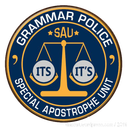
However, (and grammar geeks round the world will choke at this) when it comes to fiction, provided the grammar fits your writing style and character personality, and provided you are consistent throughout your work, anything goes.
The main test is whether the grammar you use clearly conveys the meaning you intend to convey.
Regards,
Nick

October 10, 2016
Eight Secrets to Book Marketing
 Everyone thinks it’s easy: write a book, self-publish, rake in the money. But actually it is really, really difficult.
Everyone thinks it’s easy: write a book, self-publish, rake in the money. But actually it is really, really difficult.
No matter how good your story or how well edited or how brilliant your cover, if your book isn’t visible, it might as well not exist. Self publishing is really all about Self Marketing:
To make sales you need marketing funnels.
To make funnels you need products – books, stories etc.
To get your products noticed you need reviews, lots of them.
To get the reviews you need a fan base.
To get a fan base you need a social media platform.
To get a platform you need followers on social media.
To get followers you farm social media with content
To get content you need to write and publish regularly and often.
The less money you have for adverts the longer it will take. So start writing that next book so you have more products for your marketing funnel, learn about marketing, start building your platform, and give away your existing work to anyone who will provide a review.
Here’s a book that might help you: ‘Write. Publish. Repeat’ by Sean Plat & Johnny B Truant.
All the best,
Nick

September 29, 2016
Creating Original Stories
 Some people say,”There are no original stories”. I disagree there are original stories, it’s just that they are few and far between.
Some people say,”There are no original stories”. I disagree there are original stories, it’s just that they are few and far between.
Nearly all of us are bound by the stories of the societies we grow up in, the experiences we share, and the education that shapes us. For most of us, by the time we leave education we are not capable of an original thought, let alone creating an original story.
I would say the following are original stories, but I could be wrong:
Frankenstein by Mary Shelly
Pride and Prejudice by Jane Austen
Dune by Frank Herbert
Animal Farm by George Orwell
Lord of the Rings by Tolkien
The story of Jesus.
The Time Travelers Wife by Audrey Niffenegger
To create an original story, I reckon you need to be:
A visionary who can see the consequences of where society is headed.
A young child who has not yet learned the moors and restraints of society.
Mentally different, so the moors and restraints of society have little impact on you or you see the world from a different perspective.
Or you know someone like one of the above.
For the rest of us: “Good writers borrow, great writers steal” – there seems to be a great deal of argument about who said that.
Some of the most influential stories of recent history have been reworkings of other stories e.g. Star Wars is Lord of the Rings set in space, Alien is just another space monster movie but taken to an extreme, Bridget Jones is Pride and Prejudice, and Romeo and Juliet have been retold numerous times.
The way you make something your own is by taking the bones of a story: the plot, characters, story beats, and theme, and doing something different with them: Change the theme, change the location, change the characters, change the setting, change the ending, change the hurdles/difficulties the characters have to overcome, give them super powers, give them a disability, change the consequences, put the story in the past, in the future, include time travel, restrict/unrestrict the characters in some way, give the characters different character traits/flaws.
If you follow through the consequences of any of these changes, scene by scene, you will end up with a story that is uniquely your own.
Nick

September 26, 2016
The secret of good writing
 I was recently asked the following question:
I was recently asked the following question:
If you have never ever written anything before, what knowledge do you need to not make rookie mistakes?
Here’s my answer:
There’s lots of good writing advice on the internet, but but often they missed the point.
You want the secret to becoming a good writer? Here it is: there is no such thing as rookie mistakes – there is only story, style and readability.
If people appreciate your story and like your writing style in the very first thing you ever write, then you are already a good writer.
Chances are though, that one, or more, or maybe all, of the three elements (story, style, readability) will need work before you and/or your readers feel comfortable with your writing.
Learn the rules of the writing craft, then experiment until you know how to break them in a style that is uniquely yours and that your readers enjoy.
What is deemed a mistake for me may work brilliantly for you.
Just one more word of advice: there is no such thing as a good first draft. Good writing is re-writing/editing — absolutely anything can be re-written.
Nick

September 21, 2016
Living by writing
 I was recently asked the following question by one of my followers:
I was recently asked the following question by one of my followers:
How popular does a novelist need to be in order to make a living solely from writing?
This is my answer:
Any author, who doesn’t simply get lucky, has to release a ton of titles and garner loads of fans in order to make a living. It’s also important to keep fans, and inspire them to chat about the books; word of mouth sells more books than advertising. This is possible on the internet, but it takes years to build that sort of following and have enough published books ‘in the bag’ to keep new readers buying.
No one talks about this, but a lot of authors published through the big 5 and their subsidiaries don’t make a living at writing. Also the marketing budget expires after six months so after that your book is essentially self-published anyway. In fact, very few authors make a sustainable living through their novels.
Let’s look at some fictitious figures for a self published author:
$0.99 is a good price for a first book. If it is well written and interesting, $1.99 is a good price for a second book, $1.99 is also a good price for the third book and $3.49 is a good price for the box set; $7.99 is a good price for a 9 book box set. Plus, you will need some freebies to give away to new customers who wish to sample your work or encourage than to join your email list, and give to existing customers to keep them ‘on board’ until your next publication.
To make $1,200 per month you will need to sell 225ish big box sets per month, or 500ish small box sets. This means you need to be producing at least 5 full novels per year (which is going some) and have somewhere in the region of 10,000 regular customers on your email list. It is certainly do-able, but it ain’t going to happen over night. So don’t give up the day job any time soon – though if you can afford to go part-time that would certainly help.
My advice is to write because you enjoy it, and if you enjoy it enough, put in enough work, and are disciplined enough, you might end up publishing sufficient books to eventually make a living. Even then, you may still require a part time job to make ends meet.
Nick

September 14, 2016
Do you have some ideas to write a very good book?
 I was recently asked this question by a follower:
I was recently asked this question by a follower:
Do you have some ideas to write a very good book? I want to write more than anything, but sometimes the ideas simply doesn’t flow or come to me.
This is my answer:
If you are wanting to write fiction, then forget the old adage about writing what you know. No one wants to know what you know; readers want to know what you have experienced, how you reacted, and why.
Character and conflict are at the heart of every good story. So.here is what you do :
Dream up an interesting character.
Give them some interesting character flaws.
Think of something they really, really want, then put it out of their reach.
Dream up another character with opposite characteristics and have them really, really want the same thing.
Now pit the two characters against each other.
Hey presto, you have a protagonist an antagonist, a plot, and conflict – all the elements of a good book.
Now think about the conflicts you have had in your life and use them as the basis for barriers that your protagonist has to overcome to get what they want. Obviously up the anti, and exaggerate the he’ll out of reach situation, but basically that is how you do it.
The rest is down to hard work, your skill as a writer and luck.
Nick
P.S. If you have any good ideas, please leave them in the comments section and I will pass then on.

September 8, 2016
Practically Perfect Paragraphs
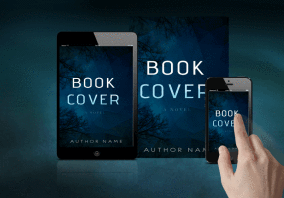 When young people read stories in text format, on a mobile phone, their engagement climbs from 20% to 85%. So says online startup, ‘Hooked’, who are trying to build a business around presenting short stories in text format on mobiles.
When young people read stories in text format, on a mobile phone, their engagement climbs from 20% to 85%. So says online startup, ‘Hooked’, who are trying to build a business around presenting short stories in text format on mobiles.
I do not intend to experiment with text format stories, but some of the other stats presented in the Hooked article did catch my attention: text stories are no longer than 1000 words, paragraphs no longer than 100 characters (that’s about the length of this sentence).
This got me thinking about my own writing.
When I wrote the first draft of Gaia’s Brood, I published it chapter by chapter on Wattpad. I quickly twigged that two-thirds of my readers were viewing it on their smartphones. In response, I started writing specifically for the mobile reader:
I reduced by paragraph length, included lots of dialogue, and reduced my chapters to about 1000 words. I even changed my character point of view to first person present tense, which also increased the need for dialogue (okay, so I know dialogue isn’t text format, but it’s close). I also made the decision to write in colloquialisms (isn’t, it’s etc). Eventually this became my writing voice for the Nina Swift series.
Demands of the ebook
Since then I have extended my chapter length to 2,500 -3,000 words, to meet the demands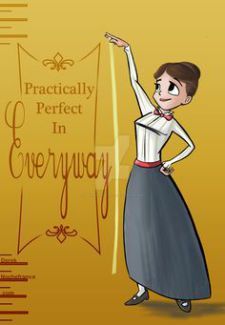 of ebook readers (pushing each chapter through a seven-point story arc), but the shorter paragraph lengths remain. I have written more extensively about the perils of using first person present tense elsewhere, but basically many traditional readers do not find it a comfortable style in which to read. A few even dismiss it as a tense in which you should never write a novel (I disagree of course), though most do get drawn into the story and style within a few pages, with some even describing it as ‘a uniquely intense narrative style’.
of ebook readers (pushing each chapter through a seven-point story arc), but the shorter paragraph lengths remain. I have written more extensively about the perils of using first person present tense elsewhere, but basically many traditional readers do not find it a comfortable style in which to read. A few even dismiss it as a tense in which you should never write a novel (I disagree of course), though most do get drawn into the story and style within a few pages, with some even describing it as ‘a uniquely intense narrative style’.
The younger generation have fewer problems with first person present tense than their elders. Perhaps this has something to do with their familiarity with texting and snapchat, which is partly what caught my eye about this article and these stats.
Perhaps I was right all along, perhaps I should return to a 1000 word chapter length. It all comes down to my target audience.
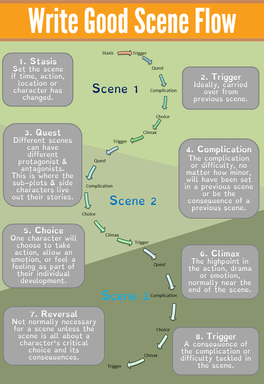 Target Audience
Target AudienceHowever, my problem is I have two target audiences: young adults who read mostly on mobiles and who like the dystopian aspects of my novels; and more mature readers who like the steampunk aspects and read on ereaders or larger screens.
To satisfy both audiences I am contemplating reducing my scene lengths to about 1000 words, but including two or three scenes in a chapter, each with their own seven-point story arc.
Of course, there is always the argument that a novel doesn’t need chapters at all, but I will save that for another blog.
So, what is your practically perfect paragraph and chapter length? How do you write for the different media used by your readers? I would love to hear your opinions and comments.
Nick

August 11, 2016
Steampunk Author Interviews
Want to know more about the authors whose books are featured in Best Steampunk Reads?
Now you can. Because I have added a new section to my website with in depth interviews of those steampunk authors featured on the Best Steampunk Reads page.
These interview not only give an insight to their stories and characters, but also offer a tantalising glimpse of their writing techniques and habits.
So far there are interviews with Austin Hackney, Steve Turnbull, and myself, but over time it will grow into a comprehensive library of writing experience.
Okay, so it also offers something else I can tweet about and put into my newsletter.
View Steampunk Author Interviews here.

Best Steampunk Reads
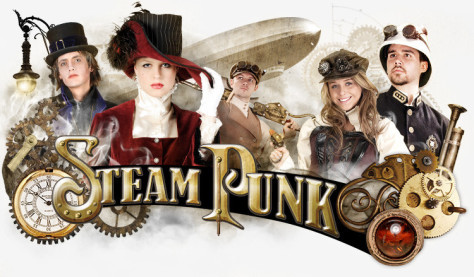
Best Steampunk Reads is a new section I have introduced on my website.
I don’t know about you, but I struggle to find good steampunk reads.
Being a niche market, most steampunk is written by Indie authors, like myself, who self-publish. Filtering out the good from the not so good, and the promising from the mundane is not so easy. So I have added a page to my restructured website where I highlight my favourite steampunk novels.
Being a novelist myself, it’s no surprise that I favour character driven stories. For me, characters that embody the attitudes of steampunk always trump stories that just display steampunk settings and costumes. So, if you enjoy character driven steampunk stories you may like to try out some of the stories features on my Best Steampunk Reads page.
The commercial bit.
If you are a follower of my blogs and articles, I’m sure you have already guessed there is a commercial element to all this. I would like to say, “No, I’m just doing it because I am kind and I like to do things for free.” Whilst this is true, I do have to stick my hands up and admit there is a commercial element.
First, if you click the links on the Best Steampunk Reads page and buy the featured books from Amazon, I will get a small (very small) affiliates commission. There is no way I will get rich via this, but every penny counts, and maybe, just maybe, my Best Steampunk Reads will become the ‘go to’ page for steampunk fans – more probably pigs will fly first, but it worth a shot.
More importantly, I cannot write fast enough, or publish often enough, to keep my fans and subscribers fully engaged. This means I need something else to fill the newsletters I send to my email list of fans and subscribers and news about other steampunk publications and authors is ideal stuff.
So have a look at my Best Steampunk Reads, and tell your friends/family/followers/subscribers/the whole world.
Nick




